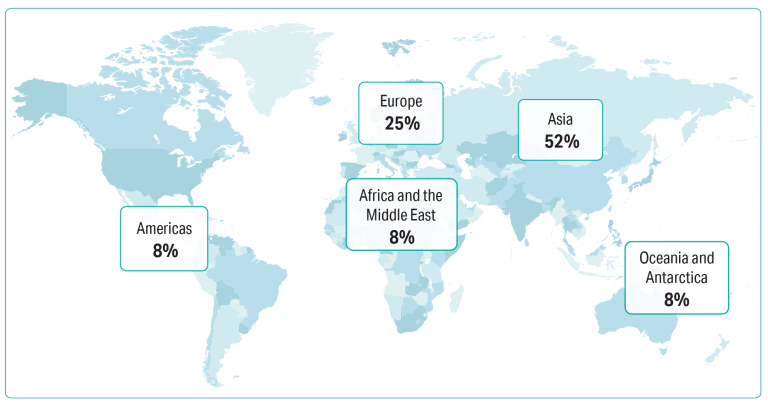CALD Representation at the Australian Public Service Commission
The Commission acknowledges that the basis for identification as CALD varies widely. For some the dimension for identifying as CALD could be language spoken at home is other than English, while for others that they were born outside Australia or it might be that they have an affinity with CALD through their family ancestry or lived experience. The Commission wants to ensure that the CALD Action Plan is for all staff, those who identify as CALD, on whatever basis is meaningful to them and for non-CALD staff, so that all staff can flourish.
The data analysis which follows is based upon the APS Employment Database (30 June 2024 and 31 December 2024) where the percentage culturally diverse is defined as “First language not exclusively English”. This definition aligns with the measure of CALD for the purpose of benchmarking and tracking progress towards a reportable benchmark in accordance with the APS Culturally and Linguistically Diverse Employment Strategy and Action Plan.
- 19.1 % of APSC staff are CALD. [1]
- In the APSC the highest representation of CALD staff is at APS classification levels. [2]
- CALD staff represent 20% of SES staff at the Commission. [3]
APSC CALD Representation |
|

|

|
| (APS Employment Database 30 June 2024 and 31 December 2024. Percentage culturally and linguistically diverse. “First language not exclusively English”). |
*APS 1-4 includes Graduates, Trainees and Cadets. **CALD percentages are calculated based on headcount totals that exclude missing data and chose not to give values. (APSC Employment Database 31 December 2024. Percentage culturally and linguistically diverse.”First language not exclusively English” |
APSC CALD Representation |

|
(APS Employment Database 31 December 2024. Percentage culturally and linguistically diverse. “First language not exclusively English”). |
Continent of birth for APSC CALD Staff *

*Staff identifying as culturally and linguistically diverse based on “First language is not exclusively English” by Continent of birth (other than Australia). APS Employment Database 31 December 2024. Percentages have been rounded.
“More all of us learn and appreciate things that make different cultures ….. the more we exercise the brain to be open and inclusive to different ways of thinking” APSC staff member
Footnotes
[1] APS Employment Database 31 December 2024. Percentage culturally and linguistically diverse. ‘First language not exclusively English’ is provided as a measure of CALD for the purposes of benchmarking and tracking progress towards a reportable benchmark in accordance with the APS CALD Employment Strategy. This measure is not intended as the singular measure of CALD for wider purposes.
[2] APS Employment Database 31 December 2024. Percentage culturally and linguistically diverse. ‘First language not exclusively English’ As for note 1 above.
[3] APS Employment Database 31 December 2024 .Percentage culturally and linguistically diverse. ‘First language not exclusively English’ As for note 1 above.



